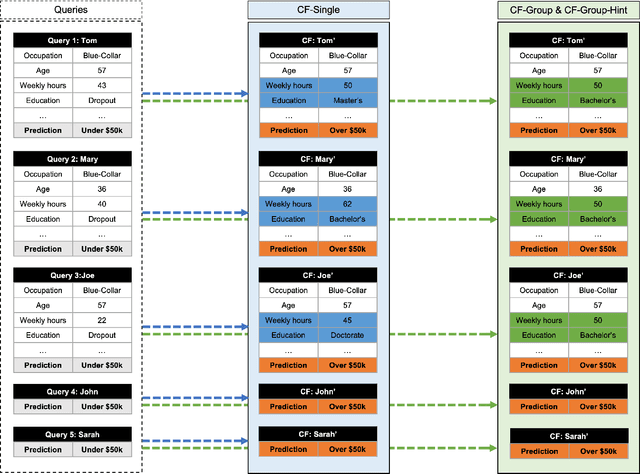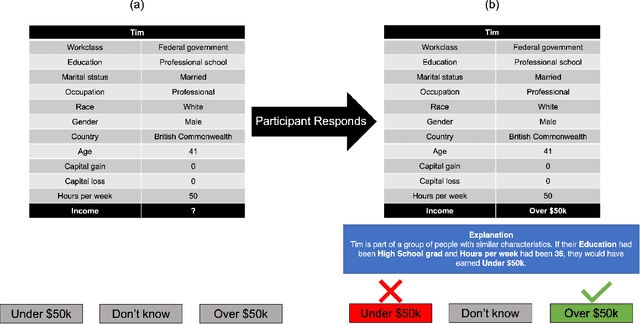Explaining Groups of Instances Counterfactually for XAI: A Use Case, Algorithm and User Study for Group-Counterfactuals
Paper and Code
Mar 16, 2023



Counterfactual explanations are an increasingly popular form of post hoc explanation due to their (i) applicability across problem domains, (ii) proposed legal compliance (e.g., with GDPR), and (iii) reliance on the contrastive nature of human explanation. Although counterfactual explanations are normally used to explain individual predictive-instances, we explore a novel use case in which groups of similar instances are explained in a collective fashion using ``group counterfactuals'' (e.g., to highlight a repeating pattern of illness in a group of patients). These group counterfactuals meet a human preference for coherent, broad explanations covering multiple events/instances. A novel, group-counterfactual algorithm is proposed to generate high-coverage explanations that are faithful to the to-be-explained model. This explanation strategy is also evaluated in a large, controlled user study (N=207), using objective (i.e., accuracy) and subjective (i.e., confidence, explanation satisfaction, and trust) psychological measures. The results show that group counterfactuals elicit modest but definite improvements in people's understanding of an AI system. The implications of these findings for counterfactual methods and for XAI are discussed.
 Add to Chrome
Add to Chrome Add to Firefox
Add to Firefox Add to Edge
Add to Edge